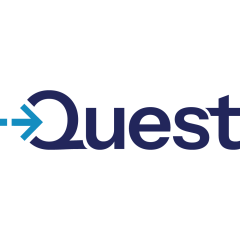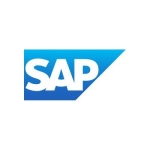
erwin Data Modeler Valuable Features
I love the way erwin Data Modeler creates data models and presents them for our users. It's a great drawing tool and it represents the foreign key relationships, and you can easily drag those relationships to make the model easy to read. I think it's great. I've been using it a long time, and I think the way it presents the data in a visual format is great. It works fine, it's gotten better over the years, and it's really good now.
I can tell you that we're using it to manage CVS's data, which has some PHI and PII data, personal health information and personal identifiable information, which relates to HIPAA, the Privacy Act for medical information. We have to go through all of our tables, every column, and flag where it has PII data or PHI data and a couple of other flags that we use internally. I use the UDP feature, the user-defined property, for these extra data elements. erwin Data Modeler has a way that you can add identifiers for each column, and I use that feature a lot to track things that are specific to us, and we're using it for data governance. That's using an existing erwin Data Modeler feature to do that. There may be some data governance features built into erwin Data Modeler or some other related tool that we're not using, and if so, then I don't know about that. But I can tell you that we are using it to support our data governance needs, at least in a limited way using the UDPs for columns.
View full review »My favorite feature of erwin Data Modeler is that we can export and import tables directly from the databases. It is easy to map from table to table and column to column.
In managing data across different environments, we are not dealing with the data in erwin Data Modeler. We use it to describe the relationships between tables and define how the data flows from one environment to another. For example, if we talk about a customer table, we define how many columns should be there and the data types and characteristics of that particular column and table. While we can store structure information at the mapping level, we are not managing data within this tool.
View full review »YJ
Yang Jiao
Senior Data Scientist at a consultancy with 10,001+ employees
Currently in the market, there is no competitor to erwin Data Modeler; everything is very powerful, such as performing reverse engineering from an existing database and deploying that on Databricks or Snowflake. It is very easy, and because there is no comparison, every feature in erwin Data Modeler is very powerful and exactly meets our expectations.
Buyer's Guide
erwin Data Modeler
January 2026
Learn what your peers think about erwin Data Modeler. Get advice and tips from experienced pros sharing their opinions. Updated: January 2026.
879,768 professionals have used our research since 2012.
The process of creating visual representations of data structures using erwin Data Modeler allows you to see everything you are doing. When you are working with the data, you are actually seeing the visual representation, and you have visuals to see what you are going to do and what has been done so far. It's not just attempting to make sense of a lot of data, but the way the data is organized and you have a visual of that organization helps a great deal in terms of trying to remember what you did and trying to retrieve the information. If you have worked through the entire process, it's a very significant advantage.
I think about the integration capabilities of erwin Data Modeler and connecting with erwin Data Intelligence and enterprise architecture tools. Model navigation was tree-based, it had a zoom pan, auto layout, entity-attribute filtering, views, and sub-diagrams. erwin Data Modeler was stable for most database engines, but I recall it became slow when the models were extremely large, containing more than a specific number of database objects.
In managing data across different environments, erwin Data Modeler supports most major relational databases such as Oracle, SQL Server, PostgreSQL, and MySQL. It can read metadata directly from live databases and can help visualize legacy systems or systems that are not properly documented. I think that erwin Data Modeler is a very reliable tool for modernization and migration projects.
Regarding stability, I have not seen any lagging, crashing, downtime, or any sort of instability; it was very stable for most of the database engines.
View full review »AW
Anthony Woods
Data Architect at a energy/utilities company with 10,001+ employees
One of the best aspects of the tool is its reverse engineering capability. I can connect to a database and generate a new model. It creates foreign key relationships, both defined and implied, mapping them in my diagram. The ease of toggling from a logical model to a physical model is a great feature. It makes my job much easier to visualise my data model and relationships. Transitioning from a logical to a physical environment with just a switch is key. If I define my target database, it can generate my DDL for forward engineering.
View full review »One of the key aspects of data governance is defining the data dictionary and clearly identifying which data is accessible by whom and what is not accessible, particularly regarding PII-related data. All of this information can be captured in this tool.
It is beneficial for collaboration among business, IT, and data teams.
This tool is beneficial to any organization as it is foundational. There is no better way than this, and it is a must-have for every organization, whether large or small.
View full review »Quest can create conceptual and physical data models to facilitate effective communication between business and IT. It can also integrate expertise from various engineering and database systems within your organization to enhance data management and administration.
View full review »WO
William O'Shea
Data Architect at a energy/utilities company with 10,001+ employees
We like that we can go straight from Data Modeler to Data Intelligence Suite. We can go from the business glossary to the data catalog. It gives us a holistic view. The product lets us import different types of models from various databases. It also allows us to export or implement them within the same databases based on new changes.
View full review »DS
Denise Smallwood
Data Architect at a real estate/law firm with 1,001-5,000 employees
We can create mappings in erwin and possibly data dictionaries. You can also check in to GitHub or Azure DevOps.
View full review »The ease and quick ability to create the model is valuable. The fitting model is very intuitive.
The other cool feature is the reverse engineer feature. If we connect to the database, we can reverse engineer from the database itself of the physical model. That gives us the relationship of the data if not much documentation is available.
View full review »The easiest way of exposing or sharing the model to all the users at the enterprise level is the feature I found to be valuable in the solution.
The solution is excellent in providing a visual representation of a database and can generate DDL for implementing changes. We use DDL for logical purposes to review with business people, ensuring they have the required fields for processing. We also use it as a data dictionary for the physical data model to understand all the purposes of the terms. This helps us map the logical and physical terms with the business definition to understand our data.
Data Modeler is straightforward to use and fulfills all our requirements.
View full review »The product allows us to reuse entities and attributes. Whether we're working on a conceptual or logical model, once we have defined them, we can reuse them rather than defining them all over again. It's a clever feature and helps with our work.
View full review »Forward engineering, DDL generation, reverse engineering, and reporting are the most valuable features of the solution.
View full review »Drag-and-drop data modeling and reverse engineering out of databases are the most valuable features of erwin Data Modeler by Quest.
View full review »It provides flexibility with the code. You can change the code as you want. Basically, you can change SQL based on what's best for your project.
It allows us to create logical data models. We can represent a database model in business terms, which is very useful for us.
It supports a wide variety of databases, including the latest ones. We have chosen to go for a cloud-based database, and it supports that, which is very useful.
It is very useful for maintaining relationships between tables. We can put constraints and foreign key-primary key relationships into the model, and it gets translated into the physical database seamlessly.
Workgroup is another useful feature to store and share the models with the team for collaboration.
I have worked with erwin Data Modeler for quite some time and familiarity is its most valuable feature.
View full review »The data lineage feature is very valuable.
View full review »They have a lot of features and the most up-to-date technology integration, which I haven't seen in other products.
In terms of features, I believe they were doing very well in the latest technologies as well.
View full review »DJ
David Jaques-Watson
Senior Consultant at a tech services company with 11-50 employees
Being able to point it to a database and then pull the metadata is a valuable feature. Another valuable feature is being able to rearrange the model so that we can display it to users. We are able to divide the information into subject areas, and we can divide the data landscape into smaller chunks, which makes it easier to understand. If you had 14 subject areas, 1,000 entities, and 6,000 columns, you can't quite understand it all at once. So, being able to have the same underlying model but only display portions of it at a time is extremely useful.
I am currently trying to compare and synchronize data sources with data models, and it is pretty good. It shows you all the differences between the two systems. After that, it is a matter of what you want to do with them. It is certainly helpful for bringing models in and being able to compare. At the moment, I'm comparing something that's in a database with something that was in the DDL statement. So, these are two different sets of sources, and I can bring different sources together and compare them in the one, which is really helpful.
View full review »RP
Ruby Perle
Senior Data Architect at a financial services firm with 10,001+ employees
The most valuable features of the Workgroup Edition are the
- centralization of the models
- flexibility of the directory structure
- application of the naming standards across all models in the repository.
The centralization of models helps share models across the organization. Instead of having to email someone and say, "Hey, where did you put the model for this?" it's easily found. It also makes it easy to organize models. When you work in a large organization that has more than 1,000 models, you need to be able to organize them in some fashion.
Historically, the Workgroup Edition had a flat structure so you had to name a model in a particular way to be able to find it, when you had thousands of models. With the current version, because you have a flexible directory, you can organize your models any way that your organization feels would work well.
In addition, the visualization side of erwin really helps people to understand the structure of their data. It greatly enhances their ability to create the appropriate modifications to their existing structure, because they can graphically see how their structure is currently laid out. It helps with maintenance on existing applications, and it dramatically helps, when you're doing greenfield, in understanding your data requirements in a graphical format. The graphical aspect helps non-technical people to understand the database design. For the non-technical folk, it is very helpful for understanding the design and whether or not the design is meeting their requirements.
For anyone who's interested in the data design of an application, or a warehouse, the erwin Data Modeling tool is very helpful. That's especially true for people who don't understand the structure of databases. It helps them understand the relationships between tables, and what is contained within a table. It's an understanding that they don't have without this kind of product.
View full review »The modeling portion of the tool is the most valuable. There are some notes, naming standards, and other functions that we use as well. There's a whole boatload of functionality in this thing and we use maybe 10% of it. It seems to be pretty common that not all the functionality is fully utilized. But it's got gobs and gobs of stuff that you can implement if you so choose to.
We've definitely expounded on the amount of features we use. They've built in some automated naming standards that have been really helpful for us. That's probably the biggest leap we've used. We've always used the comments and notes features, but the automated naming features have been very helpful.
Its ability to overcome data source complexity and enabling understanding and collaboration around maintenance and usage is extremely helpful because they give a visual to not only developers and database administrators, but the user base themselves. So the typical user isn't going to understand database functionality. Being able to show them a picture of how their data is actually going to look in the database is very helpful for their understanding of what we're trying to do with their data.
erwin's ability to compare and synchronize data sources with data models in terms of accuracy and speed for keeping them in sync is very good. We utilize that service quite a bit. The one drawback is if you have an extremely large complex model, the compare process can take quite a bit of time, more than four hours.
Its ability to generate database code from a model for a wide array of data sources cuts development time. The fact that you can generate the DDL correctly from the model saves us a bunch of time. I would say it saves us around 40% to 50%. So even though you can generate the DDL, you still have to go in and tweak it a little bit.
View full review »Primarily, we use erwin for data modeling only, the functionality which is available to do logical models and the physical model. Those are the two areas which we use the most: we use a conceptual model first and the logical model, and then the physical model.
When we do the conceptual data model, we will look at the source and how the objects in the source interact, and that will give us a very clear understanding of how the data is set up in the source environment. The logical model gives developers, as well as the data modelers, an understanding of exactly how each object interacts with the others, whether a one-to-many, many-to-many, many-to-one, etc. The physical model, obviously, helps in executing the data model in Snowflake, on the physical layer.
Compatibility and support for cloud-based databases is very important in our environment because Snowflake is the only database to which we push our physical data structures. So any data modeling tool we use should be compatible with a cloud data warehouse, like Snowflake. It is definitely a very important functionality and feature for us.
View full review »DN
Damian Niedzielski
Data Modeler at a logistics company with 10,001+ employees
We find a few of erwin tools most valuable:
- The Bulk Editor lets us easily make a lot of similar changes within our data model.
- We use the Forward and Reverse Engineering tools to help us speed things up and create things that would have to be done otherwise by hand. E.g., getting a database into a data model format or vice versa.
- The Report Designer is extremely useful because we can create reports to share with our business users and have a business discussion with them on how things work.
We find the text manipulation through the Bulk Editor to be extremely helpful. There were times where we had a set of entities which were not following our standards. With the help of the Bulk Editor, we were able to form those names with a few Excel formulas to follow our standards.
The Reverse Engineering functionality is good and easy to follow. It works really well. For the most part, we have been able to get any database to work with our data model format.
We quite heavily use the templates that exist to apply our standards to the data models created by our data modelers. We are able to use the templates to apply things like Naming Standards, casing on names, and colors to all our data models without having to be on top of it.
View full review »SA
Sharon Allen
Sr. Manager, Data Governance at a insurance company with 501-1,000 employees
You could probably use something like Visio to draw boxes and lines, especially for conceptual, very high-level things. But when you're getting down to the database level, where you're building a design and you're creating DDL out of it, or you're going in the other direction where you're reaching into system catalogs and bringing things back, that starts to really require specialization. Visio isn't going to reverse-engineer that for you. Those features in erwin are valuable.
In addition, erwin has versioning so you can keep versions, over time, of those models and you can compare any version to any version. If you're looking at a specific database and you want to see what changed over time, that's really useful. You can go back to a different version or connect that to your change-control processes so you can see what was released when.
With versioning, you can also compare between development environments and production environments. You can see what may not have actually changed or what changes are in the works. It also enables you to do the kind of troubleshooting where you're looking at: Why on this server does this copy of something seem to behave differently than on that server? erwin highlights that really quickly for you. You don't have to closely eyeball your comparison. erwin creates a report that comes back and says what is different. And you can focus on almost anything, from the privileges in the catalog to a data type or a name anomaly. Even for servers that are case-sensitive in their structure, it will tell you the difference between something in all-caps and something that's mixed-case. If you're getting to that level of detail when you're troubleshooting, erwin is great at doing that sort of thing.
In terms of the solution's visual data models for helping to overcome data source complexity, erwin shows you "what is," if you're talking about the physical layer. When it comes to being able to make things clearer and more understandable, it depends on what your structure is. If you've just reverse-engineered SAP, it's abbreviated German. You may need other tools to help you understand it. If you're doing forward work — if you're going from conceptual to logical to physical — erwin is fabulous at letting you change what you see in the graphic. You can change your data model from just looking at primary keys to looking at primary keys and foreign keys, to looking at just the definition of the table in boxes. It allows you to change that visualization depending on your audience. If you're working with the DBAs, you can add metadata and it expands the box showing the visual of the table structure, so you can concentrate on just data types, or you can do data types and nullability and foreign keys, and all different sorts of things. You can do the indexes on top of it as well. You could end up with a table graphic that's the width of your screen if you've added all the details in.
And if it's too hard to look at that way — if you're trying, for instance, to make sure that EmpID Is always a varchar 250 — it also has the ability to take that graphic and move it into what's called the Bulk Editor. That looks much more like an Excel spreadsheet, within a view in your erwin model. You can sort your Excel spreadsheet by column name and see all of the details next to it. That way, everywhere EmpID shows up in that model, it is now in more of a column-row view, and you can easily look at that to make sure that all the EmpIDs say varchar 250. If you see one that's wrong, you can actually change it in the Bulk Editor and it changes it in the graphic automatically, because an erwin model really isn't a graphic, it's much more like a little Access database. So when you change it on one view, it fixes it in the other.
In addition, anybody using erwin to do forward engineering will find the solution's ability to compare and synchronize data sources with data models, in terms of the speed of keeping them in sync, to be almost instantaneous. You can connect an erwin data model to a database and deploy your changes, or you can deploy just delta changes. Or you can deploy one little piece because you've identified one little piece of your model. But most of comparing and synchronizing data sources with data models comes down to people and process. The tool will absolutely help you get there, but it's not going to take on all of the requirements of putting standards and processes in place. If you haven't tied your erwin Data Modeler to your change-control, it can't help you. So it's not a dynamic connection to your servers, it's just a tool that you can use with your environments.
Also, while I'm not configuring erwin, I do have templates that erwin lets me set up to configure models: different templates do colors and domains and prebuilt macros for definitions, based on different things. You don't have to configure erwin. You just have to tell it what sort of a platform you're either going to or coming from. You can also set up some draw templates and customize the colorization of different things. If you want all your primary keys to be red, you can configure that, and set that up as a template.
Finally, the solution's code generation ensures accurate engineering of data sources. With reverse-engineering, I have found it to be completely accurate. I've never found a time when it didn't get the source information correctly into the model. If you're doing a data warehousing project, where you're going from source to target, erwin can produce an extremely comfortable and dependable and trusted graphic of where you're coming from, while you design where you're going to. You know what the data types are, what the nullability is — the structure of the data. You don't know all the characterizations of data values because erwin is not profiling data values. It's just picking up the catalog structure of the tables. But it is completely trustworthy, once you've reverse-engineered it. It has never let me down along those lines.
View full review »erwin is pretty easy. I've been using it for so long it's like second nature.
The visual data models are pretty easy for helping to overcome data source complexity and enabling understanding and collaboration around maintenance and usage. It's easy to add, change, and update things. We get feedback from retailers. For example, somebody wants to update something in the item area, they want to use a new item identifier and it's just a matter of going in and adding it to the numerations for that. Or somebody might come in and say, "We're using a little bit of a different pricing model so we need to add this information into the pricing area." Or people will say "We need to add Bitcoin," so we can go in and add Bitcoin and the attributes you need to support it and do it very easily. At this point, we're not adding new capabilities, we're simply expanding existing ones.
View full review »JL
Jose Luis Leon
Data Management & Automation Manager at a consultancy with 11-50 employees
The most valuable features are the ability to reverse engineer and do model comparison. With the reverse engineering, I can understand the databases from third-party products. With the model comparison, I can track the differences between two versions of the same database.
Because I can graphically see the Modeler database, that is very helpful for my job as it helps me understand the database. It is very different from SQL and DML scripts, which are very hard to understand with just sentences. When we have a graphic, that is very helpful. We can save time understanding that database.
I like the synchronization ability a lot because it can tell me to apply some level of governance to my models. I can be sure that the model in my documentation or development environment matches with the database that is working in our production environment. It is accurate. Though, it is not always fast when we have dozens of tables, but it works. I wait about an hour in order to have a big database synchronized.
The solution’s code generation ensures accurate engineering of data sources. It avoids rework.
TH
Tracy Hautenen Kriel
Architecture Sr. Manager, Data Design & Metadata Mgmt at a insurance company with 10,001+ employees
We use the diagrams and data dictionary capabilities to help users understand the data environments, as well as how the data relates to each other. We'll use the naming standard master file to govern and ensure that we have consistent naming and abbreviations across and within data stores. We use the forward engineering templates to standardize and govern the generation of the data definition language that is used to actually make the changes to the data stores. We also use the Compare capability to ensure that we have up to date production data models. And we are looking forward to the integration of the Data Modeler metadata with the data intelligence suite in R2.
The visual data models for helping to overcome data source complexity and enabling understanding and collaboration around maintenance and usage are excellent. A picture speaks 1,000 words. Seeing a picture that shows you how the data relates to each other helps you better understand what the data is and how to use it. Pairing that information with a dictionary, which has the definitions of the tables, columns, the entities, and attributes, ensures that the users understand what the data is so that they can use it best and most successfully.
Its ability to compare and synchronize data sources with data models in terms of accuracy and speed for keeping them in sync is excellent.
We don't typically use the configurable workspace and modeling canvas because while the platform allows for the flexibility to dynamically include multiple colors and multiple themes, feedback from business users is that the multiple colors and themes can become overwhelming. When you do that, you need to include a key so that people understand what the colors mean.
Its ability to generate database code from a model for a wide array of data sources cuts our development time. By how much depends on the number of changes that are required within the data store. It is certainly better to automate the forward engineering of the DDL creation, rather than having someone manually type it all out and then possibly make a human error with spelling irregularities.
Its code generation ensures accurate engineering of data sources. It decreases development time because it's automated.
View full review »PR
Pam Rivera
Independent Consultant at a tech consulting company with 1-10 employees
I do like the whole idea of being able to identify your business rules. In my last position, I got acquainted with using it for data lineage, which is so important now with the current regulatory environment because there are so many laws or regulations that need to be adhered to.
If you're able to show where the data came from, then you know the source. For example, I was able to use user-defined properties (UDPs) on one job where we were bringing in the data from external XML files. I would put it at the UDP level, where the data came from. On another job, we upgraded a homegrown database that didn't meet our standards, so we changed the naming standards. I put in the formally known UDPs so I could run reports, because our folks in MIS who were running the reports were more familiar with the old names than the new names. Therefore, I could run the report so they could see, "This is where you find what you used to call X, and it is now called Y." That helped.
The generation of DDL saved us having to write the steps by hand. You still had to go in and make some minor modifications to make it deployable to the database system. However, for the data lineage, it is very valuable for tracing our use of data, especially personal confidential data through different systems.
Complete Compare is good for double checking your work, how your model compares with prior versions, and making sure that your model reflects the database design. At my job before my last one, every now and then the DBAs would go in and make updates to correct a production problem, and sometimes they would forget to let us know so we could update the model. Therefore, periodically, we would go in and compare the model to the database to ensure that there weren't any new indexes or changes to the sizes of certain data fields without our knowing it. However, at the last job I had, the DBAs wouldn't do anything to the database unless it came from the data architects so I didn't use that particular function as much.
If the source of the data is an L2TP system and you're bringing it into a data warehouse, erwin's ability to compare and synchronize data sources with data models, in terms of accuracy and speed, is excellent for keeping them in sync. We did a lot of our source to target work with Informatica. We used erwin to sometimes generate the spreadsheets that we would give our developers. This was a wonderful feature that isn't very well-known nor well-publicized by erwin.
Previously, we were manually building these Excel spreadsheets. By using erwin, we could click on the target environment, which is the table that we wanted to populate. Then, it would automatically generate the input to the Excel spreadsheet for the source. That worked out very well.
View full review »JL
Jose Luis Leon
Data Management & Automation Manager at a consultancy with 11-50 employees
The ability to collaborate between different members across the organization is the most valuable feature. It gives us the ability to work on the same model, regardless of where we are physically.
I like the accuracy. It is very precise.
View full review »SP
Scott Pennah
Data Architect at a tech services company with 51-200 employees
- Being able to manage the domains.
- Ability to standardize our data types and some common attributes, which was pretty powerful.
- The Bulk Editor: I could extract the metadata into Excel (or something) and be able to make some mass changes, then upload it back.
We use the macros with naming standards patterns, domains, datatypes, and some common attributes. As far as other automations, a feature of the Bulk Editor is mass updates. When it sees something is nonstandard or inaccurate, it will export the better data out. Then, I can easily see which entities and attributes are not inline or standard. I can easily make changes to what was uploaded to the Bulk Editor. When taking on a new project, it can save you about a half a day on a big project across an entire team.
View full review »Its visualization is the most valuable feature. The ability to make global changes throughout the data model. Data models are reasonably large: They are hundreds, and in some cases thousands, of tables and attributes. With any data model, there are many attributes that are common from a naming perspective and a data type perspective. It is possible with erwin to make global changes across all of the tables, columns, or attributes, whether you are doing it logically or physically. Also, we use it to set naming standards, then attempt to enforce naming standards and changes in naming from between the logical version of the data models and the physical versions of the data models, which is very advantageous. It also provides the ability to document primary/foreign key relationships and standardize them along with being able to review conceptually the data model names and data types, then visualize that across fairly large data models.
The solution’s visual data models for helping to overcome data source complexity and enabling understanding and collaboration around maintenance and usage is very important because you can create or define document subject areas within enterprise data models. You can create smaller subsets to be able to document those visually, assess the integrity, and review the integrity of the data models with the primary clients or the users of the data. It can also be used to establish communications that are logically and conceptually correct from a business expert perspective along with maintaining the physical and logical integrity of the data from a data management perspective.
BK
Beverly King De Loach
Architecture Manager at a insurance company with 10,001+ employees
The product itself is fantastic and it's about the only way to get an enterprise view of the data that you're designing. It's a design tool, obviously. Once you add the API to that where you can automate things, you can make bulk changes. You can integrate your data from erwin into another in-house application that doesn't have access to the data because the erwin data is encrypted. It's been quite a boon to us because we're very heavy into automation, to have the ability to create these ad hoc programs, to get at the data, and make changes on the fly. It's been a wonderful tool.
A data modeling case tool is a key element if you are a data-centric team. There is no way around it. It's a communication tool. It's a way of looking at data and seeing visually how things fit together, what is not going to fit together. You have a way of talking about the design that gets you off of that piece of paper, where people are sitting down and they're saying, "Well, I need this field and I need that field and we need the other field." It just brings it up and makes it visible, which is critical.
View full review »I think the ability to depict the model in a graphical fashion, think about it, and keep things consistent is what's valuable about it. It's too easy when you're using other methods to not have naming consistent standards and column consistent definitions, et cetera.
This isn't specific to Erwin, it's specific to any data modeling tool but we also like:
- The ability to graphically depict how the relationships occur and the relationship lines.
- The fact that it migrates your foreign keys for you.
- The general principles of what a data modeling tool does.
Erwin does a lot of things well. It's just very frustrating in some areas that really should not be frustrating.
The people who don't use a data modeling tool but rather use spreadsheets or wing it typically have pretty poor data models. If you use a data modeling tool, the graphical nature of the data modeling tool forces you to think about relationships. It forces you to ask questions that you wouldn't ask if you were just creating tables and doing it off the top of your head. That's number one, in my opinion, from my own experience. The number one benefit of using a tool like Erwin, is that visual representation forces you to come up with a better model.
Its ability to generate database code from a model for a wide array of data sources is useful but we're 99% SQL Server, so the fact that it generates 60 other databases doesn't really help me too much. It doesn't support Postgres or Redshift which are the two other systems that we're using.
GH
George Halkias
Technology Manager at a pharma/biotech company with 10,001+ employees
The most valuable features are being able to visualize the data in the diagrams and transform those diagrams into physical database deployments. These features help, specifically, to integrate the data. When the source data is accumulated and modeled, the target model is in erwin and it helps resolve the data integration patterns that are required to map the data to accommodate a model.
Also, collaboration around maintenance and usage is associated with data model development and expertise coming from a review process, before the data is actually deployed on a platform. So the data models are reviewed and the data sources are discovered and profiled, allowing them to be mapped to the business capability models.
View full review »GN
Gena Nelson
Enterprise Data Architect at a energy/utilities company with 1,001-5,000 employees
I find the logical data modeling very useful because we're building out a lot of our integration architecture. The logical is specific to my role, since I do conceptual/logical, but I partner with a team that does the physical. And we absolutely see value in the physical, because we deploy databases for some of those solutions.
I would rate erwin's visual data models very highly for helping to overcome data source complexity. We have divided our data into subject areas for the company, and we do a logical data model for every one of those subject areas. We work directly with business data stewards. Because the logical and the conceptual are so easy to look at, the business side can be very engaged and collaborate on those. That adds a lot of value because they're then governing the solutions that we implement in our architecture.
We definitely use the solution's ability to compare and synchronize data sources with data models. We have a data hub that we've built to integrate our data. We're able to look at the data model from the source system, the abstracted model we do for the hub, and we can use erwin to reverse-engineer a model and compare them. We also use these abilities for the lifecycle of the hub. If we make a change, we can run a comparison report and file it with the release notes.
RH
RoshanHoskere
EDW Architect/ Data Modeler at a financial services firm with 10,001+ employees
We have a very large number of operational and Data Mart Data Models inside of the erwin tool. It has a huge volume of metadata captured. Therefore, when we are working on a very large requirement, there is an option called Bulk Editor where we can input large files into the erwin in one shot to build the Data Mode with much lesser time. All the built-in features are easy to use.
We make use of the solution’s configurable workspace and modeling canvas. All the features available help us to build our Data Model, show the entities, and the relationship between the entities, define the data types and add description of the entities and attributes. With all of this we can take out the PDF version of the Data Model diagram, then send them across for any teams to review.
Not to forget the version saving feature. Every time we make changes by adding, deleting and modifying to the Data Models and save, the tool automatically create a new Data Model versions so we don't lose any work. We can go back to the previous versions and reverse all the changes and make it a current version if needed.
The most valuable feature is the physical or visual representation of the database, showing the tables, the columns, the foreign keys, and the ability to generate DDL, so you can physically implement databases.
It lets you display the actual physically implemented databases or the logical databases. That enables you to review them with business users or technology people, to understand the relationships of the data throughout the company and show how data is joined together to achieve whatever the desired business results are.
View full review »YT
Yasin Tasci
Consultant at a educational organization with 201-500 employees
The solution is good for organizing the data and the scripting part is very powerful. It's easy to create technical scripts for models.
View full review »The principal feature that I liked is that the solution has a very graphic interface.
View full review »This product is the strongest data modeler on the market.
It has centralized storage so that a data model can be shared by different teams.
View full review »The automatic build to the physical is a really nice feature. I like the fact that it will bring the keys down from one table to the next, from a parent to child table. Those two things make erwin a very easy to use product.
It's a safeguard for me because I'm always concerned that somebody is free handing it and will forget a key coming from the parent. The migrating keys are a great feature. Identifying relationships, non-identifying relationships, and being visually right there to understand the differences are great features.
erwin is key to being able to visually understand whatever the customer is requesting. They'll give you words on a paper, but once they can actually view it as a picture, it really comes to life. The data comes to life to where they understand exactly what they're asking for.
Buyer's Guide
erwin Data Modeler
January 2026
Learn what your peers think about erwin Data Modeler. Get advice and tips from experienced pros sharing their opinions. Updated: January 2026.
879,768 professionals have used our research since 2012.




























